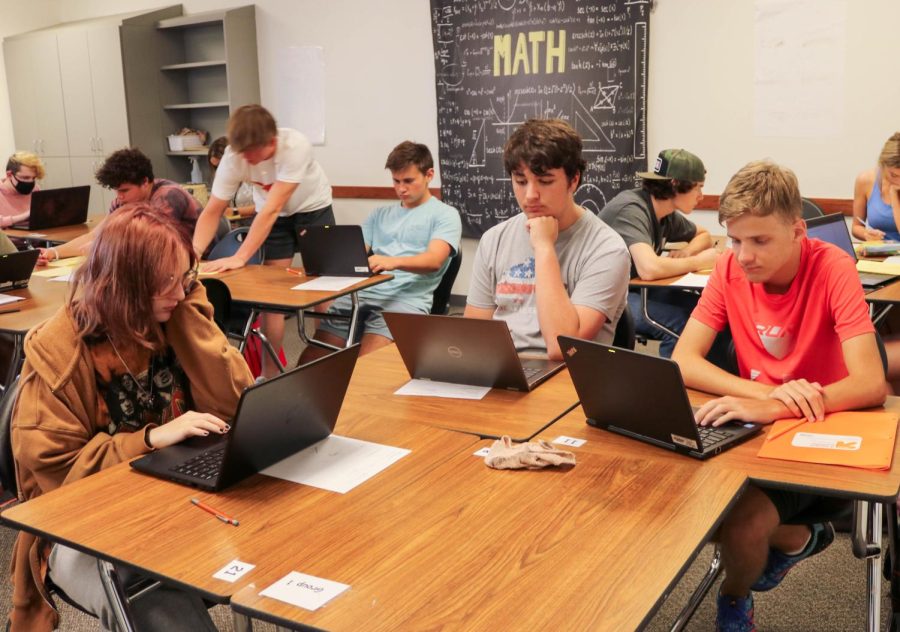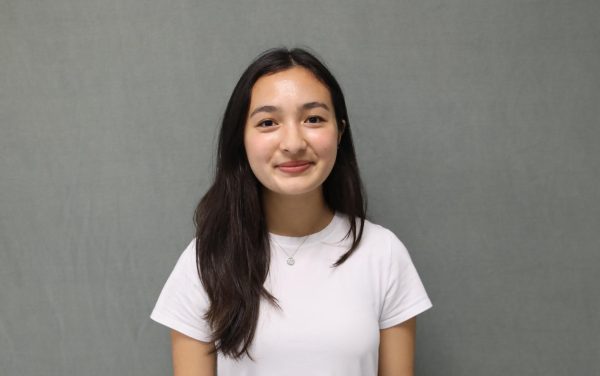A cheat for the future: Rise of AI technology causes cheating concerns for teachers
Students use their computers to complete work in class. With the rise of AI cheating, teachers are reconsidering how to ensure the legitimacy of students work.
January 20, 2023
A blank Google document with ten minutes until the due date is normally cause for clammy hands and rapid knee bouncing. However, as the clock ticks closer, hands remain dry and knees stay stagnant as the name ChatGTP is typed into the search bar. A few commands later and the document is full of vivid language and analysis, all just in time to hit the submit button before the deadline. This must be an academic miracle…right?
On November 30, a program called ChatGPT emerged onto the web with the ability to respond to essay prompts with entirely original responses using intelligent AI [artificial intelligence]. Within weeks, the program went viral and students began utilizing it for the purposes of writing everything from English essays, to code.
“Anytime a kid cheats it’s just frustrating, it feels disrespectful.” computer science teacher Sydney Yorke said. “But with this, especially for me because I’m so young, it’s like, really? You thought you could try this on your computer science teacher?”
Not only does AI have a list of ethical rules regarding its use, the school itself enforces the “Viper Honor Code” as an attempt to address and reduce cheating on campus. However, with the newness of the technology, it has yet to address students’ use of AI.
“I think there’s an element of ferality to it.” English teacher Kylie Warkentin said. “That specific program has gone viral, and people are now trying to use it. So at this point, I haven’t [had any incidents] that I know of.”
With the program being released only two months ago, the majority of cheating incidents have been taking place primarily at Universities and colleges. Unfortunately, however, Vandegrift teachers have reported having a few incidents regarding AI cheating in past weeks.
“I have had a couple of kids try [to use AI cheating].” Yorke said. “And just the cadence of it is just weird; you can tell when you’re reading it that it wasn’t written by a human.”
Most teachers report that the essays produced by ChatGPT have a certain professional, and un-human quality to them–ranging from the repetitive length of sentences, to questionable choices in syntax.
“When people think about cheating it kind of ignores the [benefit] that teachers have. Teachers have relationships with their students.” English teacher Kylie Warkentin said. “We’re familiar with their writing, and we know them as students and what they’re capable of.”
Due to the fact that essays written by ChatGPT are unable to be caught by plagiarism-catching applications such as TurnItIn.com, Warkentin suggests that teachers will need to be extra-cognizant of their students’ products.
“I’m constantly on the lookout. I get it, [students] are in a high pressure environment and it’s an extremely intense, developmental time in [their] life.” Warkentin said. “It makes sense that if [they’re] panicked, or [they] just don’t know what’s happening and don’t know how to ask for help, [they] would turn to these methods.”
Whilst ChatGPT is the most recent arrival of AI technology in this sort, it was preceded by a variety of programs that can be used to create anything from original code to artwork.
“The AI art being created is so far beyond what basically all my students are capable of doing.” art teacher Philip Deardorff said. “It’s capable of doing more than I can do, and I’ve been teaching and doing art for 30 years. It’s extremely good stuff.”
Although the issue of AI art is one of lesser stress for English and art teachers, AI coding programs are particularly tricky for computer science teachers to deal with.
“I’ve talked about it with them. All of them. Right before the break we did a whole unit on ethics and talked about AI ethics.” Yorke said. “But we’re probably gonna have to redress it.”
Companies such as Microsoft have released programs with the ability to create original code just based on just a few sentences of requests. Additionally, the program provides comments on each coding command; an aspect that is often a requirement for computer science assignments.
“We have to kind of just change how we’re addressing it.” Yorke said. “I’ve read some articles where people have been talking about making kids only be able to work on things during the classes, or doing it in a way that I can see all of the revision history.”
As with all cheating, the main concern of teacher’s is the skills that their students lose as a result of relying on outside material as opposed to their own knowledge.
“[Students who cheat] lose essentially the entire point of the art curriculum, which is to teach students visual learning, visual problem solving, understanding art history and [gaining] art skills.” Deardorff said. “All of that goes out the door, as much as it would with any other type of AI. All of that is just one massive shortcut.”








Katherine Dale • Feb 6, 2023 at 1:02 pm
This is an amazing article, Julia!